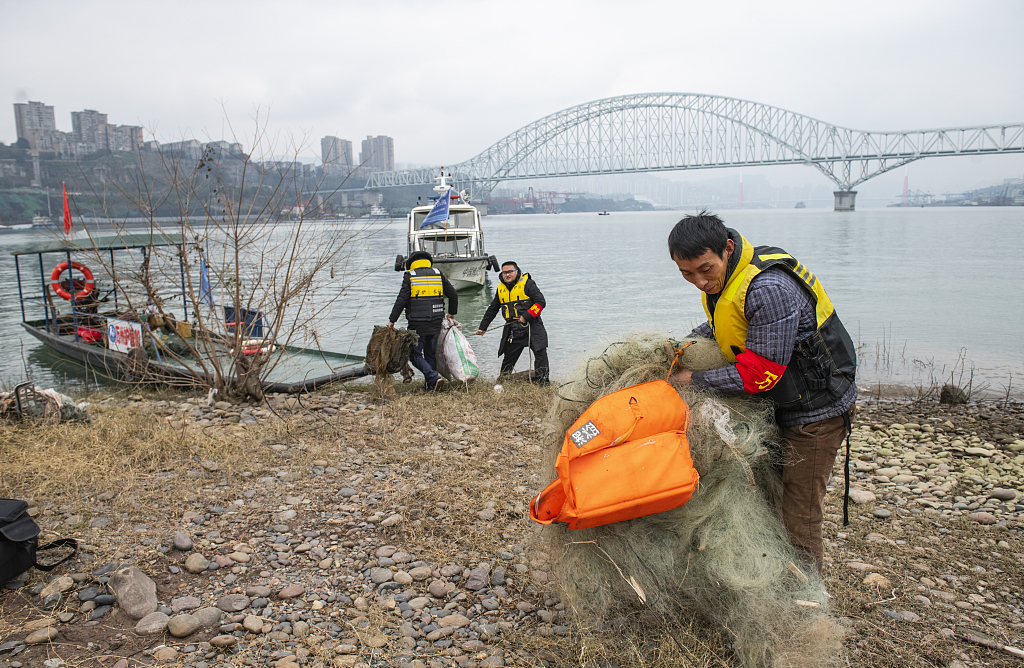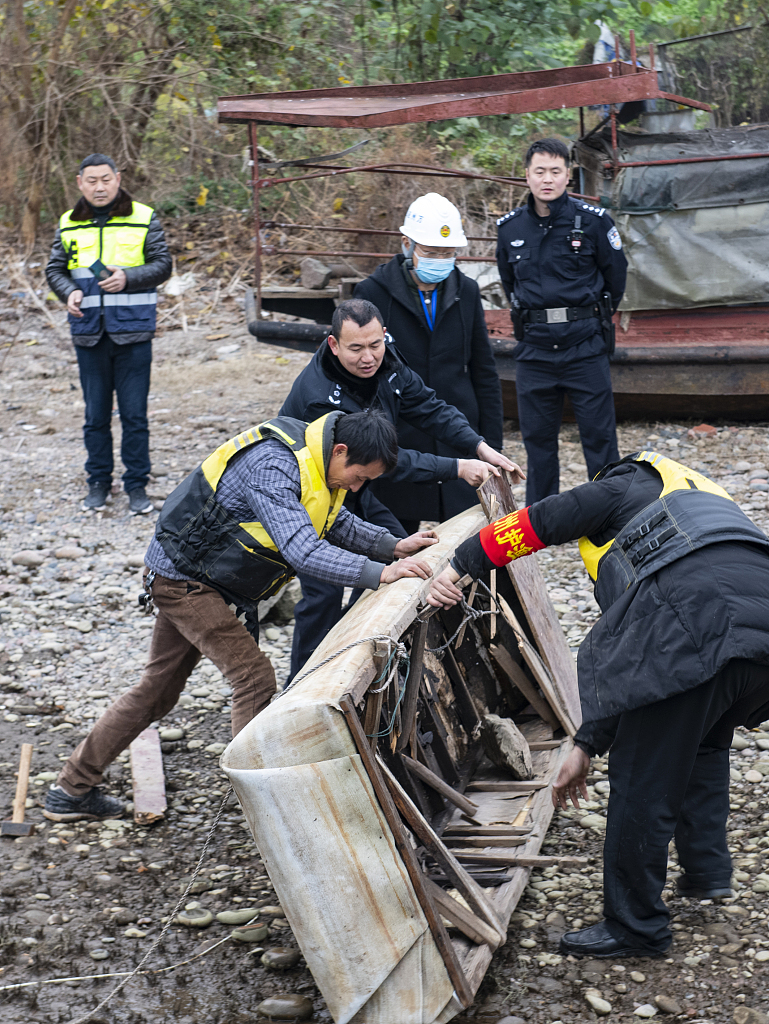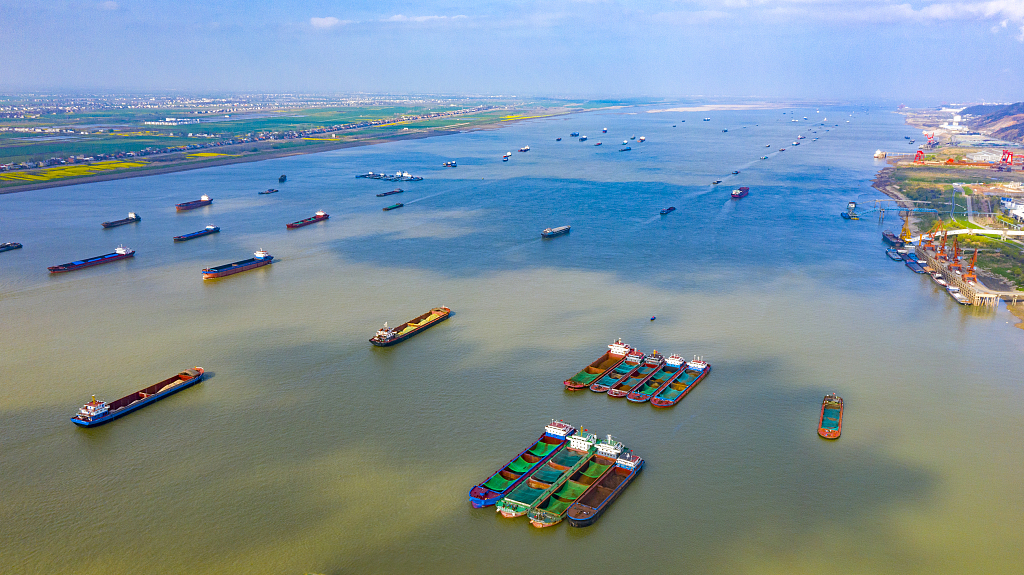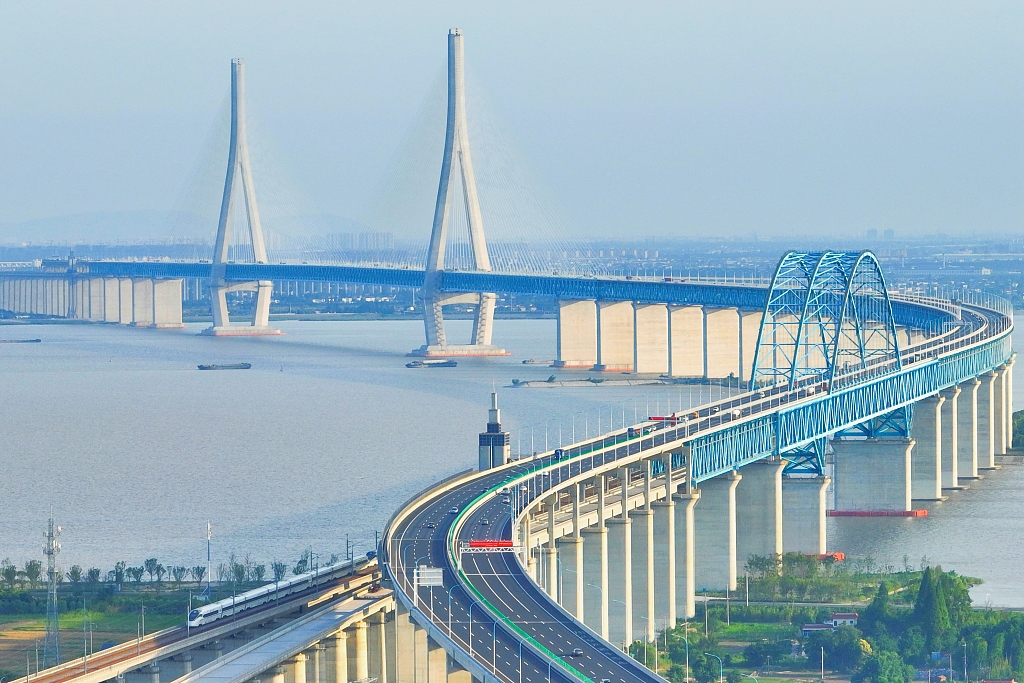The Yangtze River, China's mother river, has been going through a transformation since the general principle of replacing exploitation with protection was laid out in 2012. A policy of no large-scale development projects has been put in place, while restoring the ecology and improving the environment has been made a top national priority. Measures including pollution control and a 10-year fishing ban have been established across 11 provinces and municipalities along the Yangtze River.
Behind the efforts is the urgency to protect the Yangtze, which has been ailing because of pollution, overfishing, sand dredging and other exploitative activities.
Replacing exploitation with protection
The official website of the Network of the Development of the Yangtze River Economic Belt reported that tens of thousands of illegal docks once lined the Yangtze's banks, with all kinds of ships: fishing ships, sand dredging ships, recreational ships, among others. Take Dongting Lake, called "the kidney of the Yangtze," as an example. The Network described the "grand" scene which lasted for many years as "thousands of illegal sand dredging ships jammed together, illegal docks everywhere, and sand dunes stretching along the lake."
At the same time, Xinhua News Agency reported hundreds of thousands of small- and medium-sized chemical companies "surrounded the river with pollution," especially phosphorous chemicals.
Such activities have taken a heavy toll on the Yangtze. The Ministry of Agriculture and Rural Affairs reported that an important indicator of a river's health - its biodiversity - has been diminishing continuously. "The task of conserving the Yangtze's aquatic life is heavy, while restoring the ecology in the waters remains a daunting challenge," the Ministry said in a proposal in 2020.
To implement the protection principle, 958 chemical companies were either closed, moved or reformed from 2016 to 2021. Statistics released by the Ministry of Public Security show that 1,878 illegal mining cases along the Yangtze were solved in 2019, and 898 from January to October of 2020.
10-year fishing ban
The Yangtze, which stretches over 6,300 kilometers, has a rich and complex terrain and climate along its basin and boasts one of the highest levels of biodiversity in the world. Overfishing, pollution and other activities have been threatening aquatic wildlife in the Yangtze.
In July, the Chinese paddlefish native to the Yangtze River became the latest Yangtze fish to be announced as extinct. The baiji dolphin was declared "functionally extinct" in the same waters in 2007, leaving the Yangtze finless porpoise the last mammal surviving in the waters of the Yangtze.
A launch ceremony of the fishing ban in key waters of the river took place in Wuhan, capital of central China's Hubei Province, on January 1, 2021. The ban, which stretches over 10 years, is designed to give the Yangtze's species a break.
Even before the fishing ban was announced, regions along the Yangtze had started to take their own actions to rein in fishing activities.
Statistics show that from January to November 2021, 8,840 illegal fishing boats and 262,000 pieces of fishing tools were cleared. Xinhua also reported in January 2021 that over 230,000 fishermen had given up over 110,000 fishing boats and found another occupation.

Volunteers clear fishing nets in Chongqing Municipality of southwest China on December 31, 2020. These volunteers were local fishermen before the 10-year fishing ban on the Yangtze River came into effect. /VCG
Volunteers clear fishing nets in Chongqing Municipality of southwest China on December 31, 2020. These volunteers were local fishermen before the 10-year fishing ban on the Yangtze River came into effect. /VCG

Law enforcement officers and volunteers confiscate an illegal fishing boat in Chongqing Municipality of southwest China on December 31, 2020. /VCG
Law enforcement officers and volunteers confiscate an illegal fishing boat in Chongqing Municipality of southwest China on December 31, 2020. /VCG
Better Yangtze, better economy
The Yangtze is China's longest waterway and the world's busiest inner waterway in terms of cargo flow. The Yangtze River Economic Belt, which generates about half of the country's GDP, is home to many of the country's free trade zones, playing an important role in coordinating the opening up of coastal, river, border and inland areas.

Cargo ships on the Yangtze River near Hukou County of central China's Jiangxi Province on March 4, 2021. The Yangtze is China's longest waterway and the world's busiest inner waterway in terms of cargo flow. /VCG
Cargo ships on the Yangtze River near Hukou County of central China's Jiangxi Province on March 4, 2021. The Yangtze is China's longest waterway and the world's busiest inner waterway in terms of cargo flow. /VCG
Take the the Yangtze River Delta as an example. The delta, located on the eastern and coastal end of the economic belt, encompasses Shanghai and the provinces of Jiangsu, Zhejiang and Anhui in east China. Roughly the size of Germany, it is one of China's most economically active, open and innovative regions thanks to fast-paced regional integration. It brings together all kinds of enterprises that play important parts in the global industry chains of automobiles, semiconductors and photovoltaics.

A high-speed train crosses the Yangtze River through a bridge that connects Jiangsu Province and Shanghai on June 18, 2022. /VCG
A high-speed train crosses the Yangtze River through a bridge that connects Jiangsu Province and Shanghai on June 18, 2022. /VCG
Chinese President Xi Jinping urged for high-quality development of the Yangtze River Economic Belt at a symposium in November 2020, stressing the importance of green development, which integrates regional economic development with ecological conservation.
The approach is designed to build the Belt into a powerful engine of the country's development, bringing more certainty to the development of the world economy.
Despite these efforts, the Yangtze's protection remains a difficult task. When a new action plan to further combat pollution and restore biodiversity of the Yangtze by the end of 2025 was announced in September, the Ministry of Ecology and Environment said that breakthroughs are needed in the preservation and rehabilitation of the aquatic ecology, and the general situation of the Yangtze remains complex, leaving a daunting challenge.
For more:
China aims to restore Yangtze River's biodiversity by 2025
(All images via VCG)
(If you want to contribute and have specific expertise, please contact us at nature@cgtn.com.)